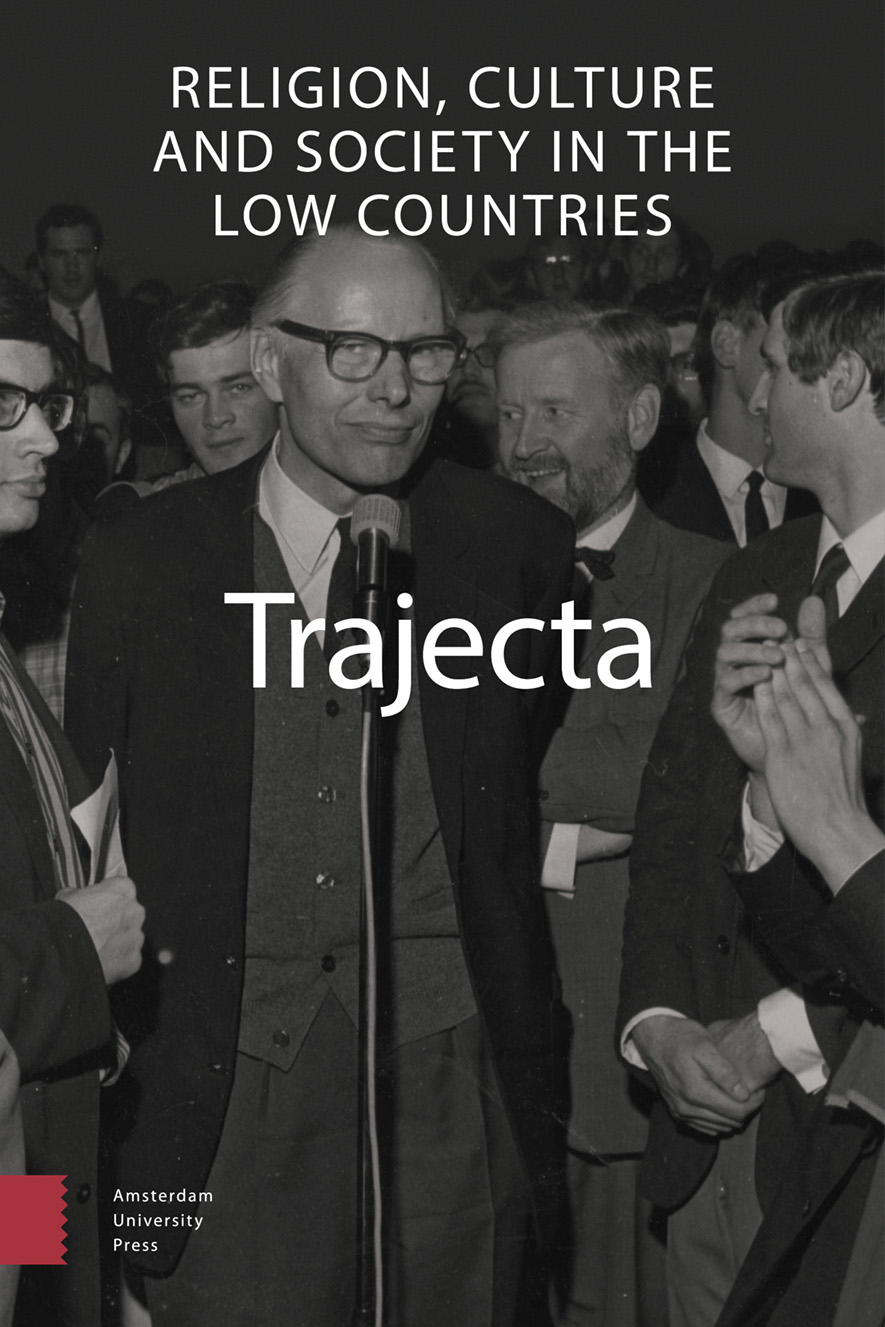- Home
- A-Z Publications
- Trajecta
- Previous Issues
- Volume 30, Issue 1, 2021
Trajecta - Volume 30, Issue 1, 2021
Volume 30, Issue 1, 2021
Language:
English
-
-
Claiming Conscripts
More LessAbstract The twentieth century is widely considered a period in which Christendom lost its central position in the West. In the Netherlands, the influx of counter-cultural ideas and beliefs from the 1960s onwards brought about a decline in church membership and voter turnout for Christian parties. Simultaneously, societal critiques grew louder against the state’s accommodation of religion and its privileged positioning of Christianity. Read More
-
-
-
Youth Work for Baby Boomers
More LessAbstract This article deals with the first decades of the Reformed Youth Council of the Netherlands Reformed Church. It was founded in 1941 to challenge young people in local congregations to join the public task of the national Protestant church. Because religious youth work had been left to particular organisations for many years previously, tensions between them and the new umbrella movement had to wait until after W Read More
-
-
-
Catholicism: stumbling or starting block for sustainable development?
More LessAbstract In considering Broederlijk Delen, the Flemish Catholic development NGO, it is instructive to understand the role of its Catholic affiliation in its changing interpretation of development aid, and in particular, its evolving ideas on sustainability as the essential ecological principal. From the end of the 1960s to 1990, Broederlijk Delen gradually introduced elements into its discourse and operations that originally were not ecol Read More
-
-
-
Een doodgewoon Rooms boek?
More LessAbstract After publication of De Nieuwe Katechismus (translated mostly as The Dutch Catechism, literally: The New Catechism) in 1966, a harsh conflict broke out between the authors of the book and the Vatican. According to censors appointed by the Vatican, the book may have not contained heresy, but some parts were not in accordance with the Church’s teachings. Three years later, an appendix was published. Th Read More
-
-
-
Opvallend orthodox
More LessA new newspaper, the Reformatorisch Dagblad (RD), came into existence in the sixties. The driving force behind its emergence was the dissatisfaction over the social changes at the time. Many Orthodox Protestants of the time had the feeling that trusted certainties, in terms of sexual morality, the Sunday and the authority, have been suddenly relinquished. Media such as Trouw played an important role in this pr Read More
-
-
-
Pionier tegen wil en dank
More LessAuthors: Charlotte Ardui & Sven SterkenAbstract Contrary to popular belief, almost as many churches were built in Flanders after the Second World War as in the first half of the 20th century. Besides obvious stylistic differences, the post-war churches were above all distinctive in terms of their location and typology. In the first place, they were a response to the strong demographic growth and the spatial policy (or rather: the lack thereof) that led to a ubiquitou Read More
-
-
-
Uit beeld verdwenen
More LessBy Wouter PrinsAbstract More than in music, literature or film, religion faded into the background in the visual arts during the 1960s. The close, longtime connection between Western visual art and Christianity and its visual language seemed to have been lost. In particular in the Netherlands, for a century most loyal to the authority of Rome, religious art was discredited. It was only in the course of the 1980s that interest in religious Read More
-
Most Read This Month
Article
content/journals/07788304
Journal
10
5
false
en


